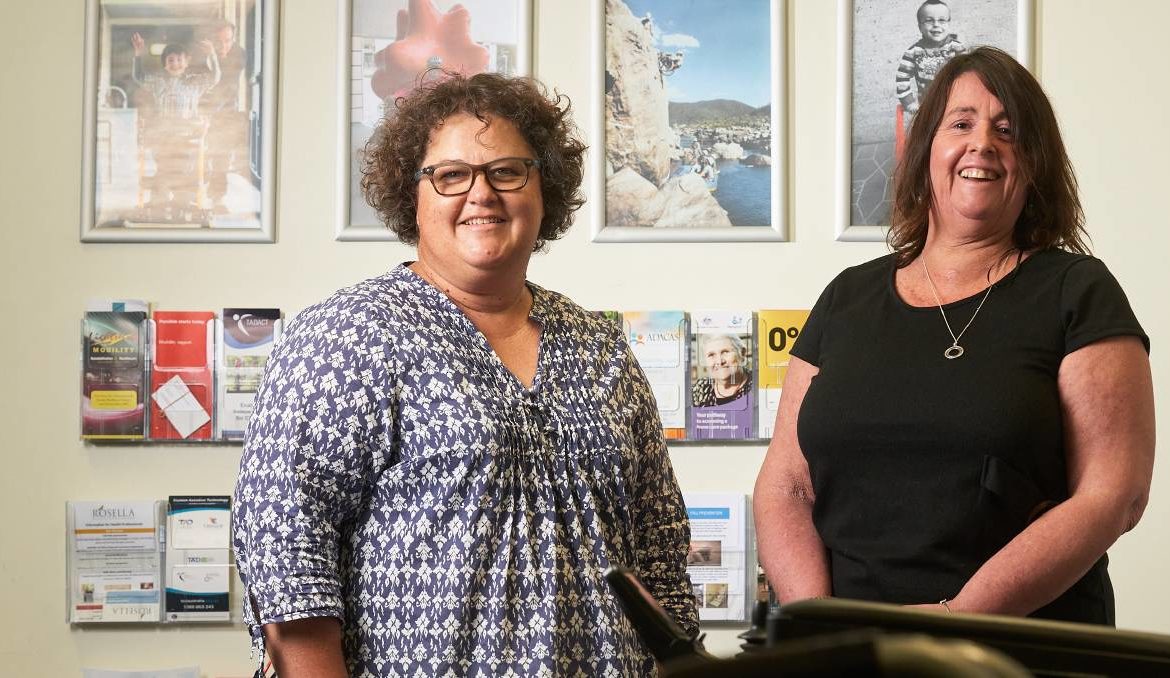news, latest-news, intelicare, intelicare sensors, tadact, tadact sensors, aged care, disability canberra
New technology coming to Canberra could soon keep the elderly and those with a disability living in their own homes for longer and out of aged care. Technology for Ageing and Disability ACT has recently signed a deal to become the first providers of InteliCare sensors to homes in Canberra. The sensors are able to be attached to walls and doorways as well as household appliances such as fridges and kettles, before establishing patterns of routines at home. Family and carers will then be able to receive alerts on their smartphone if there is a lack of movement or an unusual change in routine. Executive director of TADACT Trudy Taylor said the sensors would allow for the elderly or those with a disability to live independently, while also providing information to carers. “Its a non-invasive way to help monitor, so it maintains people’s privacy, but it’s also there as a safety mechanism for those living independently in case they fall or if there’s an incident,” Ms Taylor said. “It lends itself to children being able to then ring their ageing parents to have conversations about anything else rather than ‘did you do the washing?’ or ‘did you have food today?'” While the InteliCare sensors have been available in other jurisdictions such as NSW, Victoria and Western Australia, fellow TADACT executive Julie Lobel said she expected to see a large take-up rate of the devices, given Canberra’s ageing population. “We’re looking to have it start at around 10 clients in the first month and then 25 per month after that,” she said. “It will be a great thing for the community in terms of living independently without an alarm.” InteliCare’s chief executive Jason Waller said the sensors were designed to replace other emergency medical devices such as push-button alarms or emergency pendants. “Often people rely on pendants, and in 80 per cent of falls or incidents, those devices aren’t used because it’s not on people or they’re used incorrectly or they’re not charged,” he said. “The sensors provide a whole picture of wellness within the house. “With the impact of COVID, we’re seeing an acceleration in the home of this type of technology.”
/images/transform/v1/crop/frm/fdcx/doc7ddkujyg2djkbi6xccs.jpg/r0_360_2353_1689_w1200_h678_fmax.jpg
TADACT executives Trudy Taylor and Julie Lobel will soon have new sensors from IntelliCare that will help the elderly and those with disabilities remain independent for longer. Picture: Matt Loxton
New technology coming to Canberra could soon keep the elderly and those with a disability living in their own homes for longer and out of aged care.
Technology for Ageing and Disability ACT has recently signed a deal to become the first providers of InteliCare sensors to homes in Canberra.
The sensors are able to be attached to walls and doorways as well as household appliances such as fridges and kettles, before establishing patterns of routines at home.
Family and carers will then be able to receive alerts on their smartphone if there is a lack of movement or an unusual change in routine.
Executive director of TADACT Trudy Taylor said the sensors would allow for the elderly or those with a disability to live independently, while also providing information to carers.
“Its a non-invasive way to help monitor, so it maintains people’s privacy, but it’s also there as a safety mechanism for those living independently in case they fall or if there’s an incident,” Ms Taylor said.
“It lends itself to children being able to then ring their ageing parents to have conversations about anything else rather than ‘did you do the washing?’ or ‘did you have food today?'”
While the InteliCare sensors have been available in other jurisdictions such as NSW, Victoria and Western Australia, fellow TADACT executive Julie Lobel said she expected to see a large take-up rate of the devices, given Canberra’s ageing population.
“We’re looking to have it start at around 10 clients in the first month and then 25 per month after that,” she said. “It will be a great thing for the community in terms of living independently without an alarm.”
InteliCare’s chief executive Jason Waller said the sensors were designed to replace other emergency medical devices such as push-button alarms or emergency pendants.
“Often people rely on pendants, and in 80 per cent of falls or incidents, those devices aren’t used because it’s not on people or they’re used incorrectly or they’re not charged,” he said.
“The sensors provide a whole picture of wellness within the house.
“With the impact of COVID, we’re seeing an acceleration in the home of this type of technology.”







